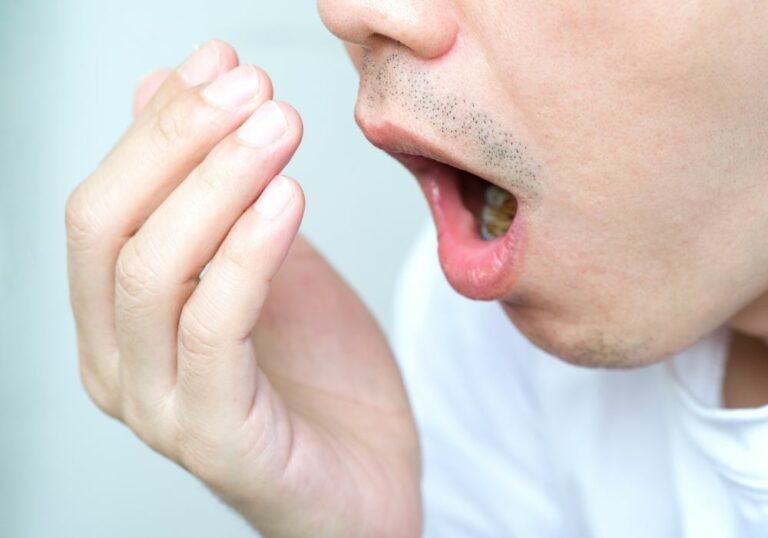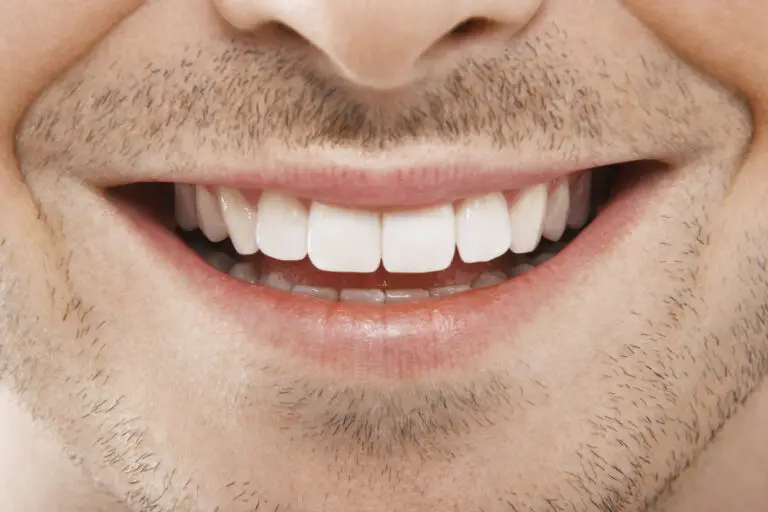How can I extract a tooth pain at home?
Tooth pain can be extremely uncomfortable and disruptive to daily life. While the best long-term solution is to see a dentist, that may not always be possible right away depending on your circumstances. There are some methods that can provide temporary relief from tooth pain at home until you can get dental treatment. However, these home remedies cannot fix the underlying problem causing the tooth pain – they should not be used as substitutes for proper dental care.
Understanding the Complex Causes of Tooth Pain

Before trying to manage tooth pain at home, it helps to understand what’s causing it. Dental pain can arise from many sources:
- Dental Cavities – Decay in the tooth structure often leads to infection inside the tooth. Bacteria penetrate through the porous cavity to infect the inner pulp which contains nerves and blood vessels. The pressure from this infected cavity on the nerve is intensely painful. The pain is often worse with hot or cold foods.
- Cracked Tooth – A cracked tooth may partially expose the nerve. Pain occurs when chewing or eating cold or hot foods. Cracks allow decay and bacteria to seep in and inflame the nerve. The crack may worsen over time all the way into the root.
- Abscess – An abscess is a pus-filled infection at the root of the tooth. The buildup of pus puts pressure on surrounding tissues and nerves. A tooth abscess causes throbbing pain and major tooth sensitivity. It often forms from an untreated cavity that reaches the pulp.
- Impacted Wisdom Teeth – Wisdom teeth that have partially broken through the gums can cause pain as they push on neighboring teeth. Food and bacteria trapped under flaps of swollen gum tissue trigger inflammation. Pressure on the back molars also causes discomfort.
- Gum Disease – Swollen, inflamed gums from gingivitis or periodontitis can cause tooth sensitivity and discomfort. Toxins from plaque bacteria irritate the gums and expose more of the tooth root surface to pain signals.
- Bruxism – Grinding or clenching teeth strains the muscles and tissues around teeth. This chronic stress on the jaws leads to sensitivity and soreness. It worsens cracks and chips over time too.
- Dental Trauma – Injuries that chip, crack or fracture teeth can expose nerves and cause severe pain. Knocked out teeth also leave exposed nerves in empty sockets that require urgent dental care.
Home Remedies to Temporarily Relieve Tooth Pain
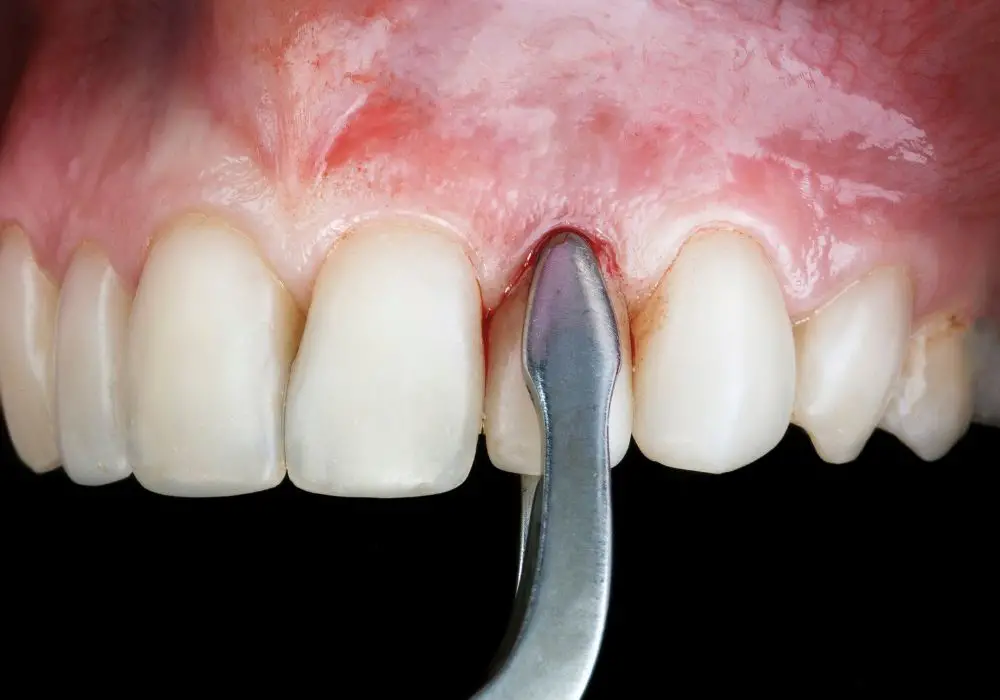
Here are some methods and medicinals that may provide temporary relief from tooth pain before you can see a dentist:
Use Cold Compress
Applying something cold to the outside of the mouth near the painful tooth can reduce inflammation and numb pain signals. The cold also helps constrict blood vessels to minimize throbbing pressure. Options to try include:
- Ice pack wrapped in towel
- Bag of frozen vegetables
- Cold wet washcloth
- Cold spoon or popsicle held on sore spot
Apply the cold compress to the affected side of the mouth for 15-20 minutes a few times per day. The numbness effect usually lasts temporarily after removing the cold source.
Swish with Salt Water
Warm salt water rinses have natural antiseptic properties that can reduce infection and inflammation of painful cavities or irritated gum tissue. Salt also helps draw out fluid from swollen gums.
Mix 1 teaspoon sea salt or Himalayan salt in a cup of warm water. Swish this solution vigorously around the painful tooth and gumline for 30 seconds and spit it out. Repeat 3-4 times. Do this several times a day to relieve pain and disinfect the area.
Take Over-the-Counter Pain Relievers
Medications like ibuprofen, naproxen or acetaminophen have analgesic effects to reduce dental pain and sensitivity. Ibuprofen and naproxen work by blocking inflammation-causing chemicals. Acetaminophen blocks pain signals in the brain.
Use oral pain relievers as directed on the bottle. Seek medical advice if pain persists beyond label recommendations. Be aware these meds only mask symptoms and won’t fix the problem. Avoid exceeding dosage limits which can cause liver or stomach damage.
Try a Natural Pain-Numbing Gel
Products like Orajel contain the active ingredient benzocaine which can temporarily numb tooth surfaces for short periods. This may offer brief relief by blocking nerve signals in the area. Limit use to 7 days maximum.
Natural pain gels are also available containing herbal ingredients like cloves, peppermint, and capsaicin. These work by modifying pain signals sent to the brain. Avoid swallowing and use sparingly. These gels are only temporary solutions and should not replace dental treatment.
Use Pressure from Tongue or Fingers
Placing direct pressure from the tongue or fingers on the biting or chewing surface of the painful tooth may relieve symptoms temporarily. Bite down gently over a cotton ball or soft gauze pad placed directly on the sore tooth as well. This pressure may block pain signals from the tooth to the brain.
Avoid Certain Foods
Hot, cold, sweet, acidic, crunchy, or sticky foods can aggravate a sore tooth. Avoid anything that makes the pain worse. Stick to lukewarm soft foods and liquids. Blenderize or mash foods if needed for temporary relief.
Take Anti-Inflammatory Supplements
Substances like turmeric, omega-3s, magnesium, and ginger have natural inflammation-reducing properties. Adding these to your diet by food or supplement may help decrease dental pain and swelling. Talk to a doctor before using supplements long-term.
Consider CBD Oil
Early research shows CBD derived from hemp may reduce nerve pain signals. Rubbing a couple drops around the sore gum area may offer relief when applied topically. Do not ingest CBD oil without your dentist’s consent.
Swish with Hydrogen Peroxide
The bubbling property of hydrogen peroxide can help dislodge food particles from a painful cavity or crack. Mix 1 part 3% hydrogen peroxide with 2 parts water. Swish around the tooth for 20-30 seconds before spitting out. Rinse with water after.
These remedies may provide temporary relief from tooth pain. But they cannot treat the underlying cause without professional dental intervention. Seek treatment as soon as possible to avoid complications.
When to See an Emergency Dentist Immediately
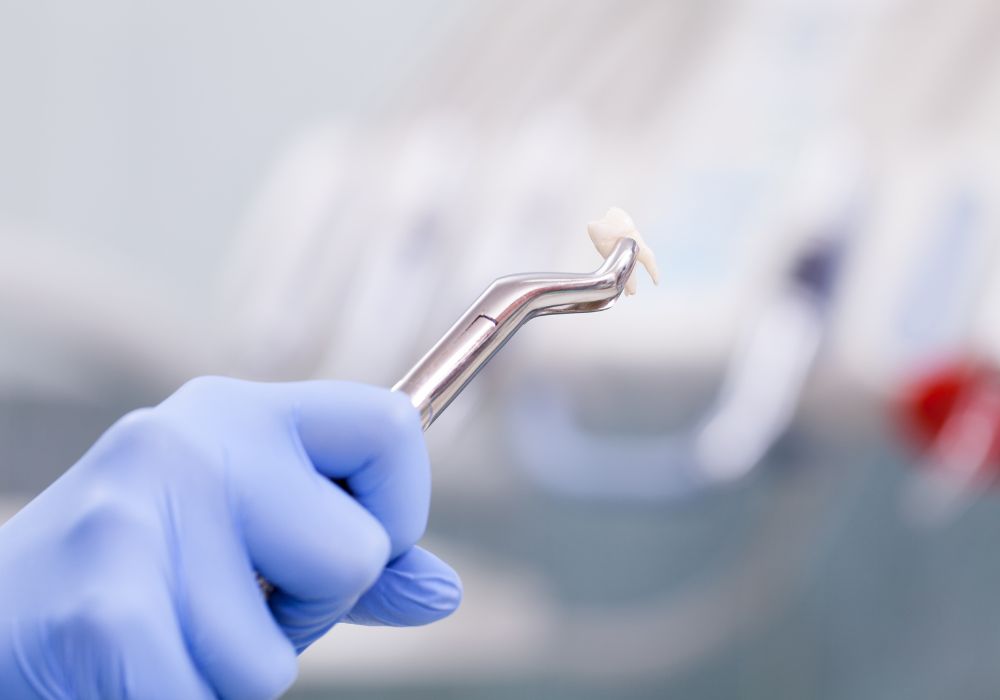
While the home remedies described can briefly manage pain, dental treatment is essential for resolving the underlying problem. Seek emergency dental care for:
- Unbearable pain not relieved by over-the-counter meds
- Throbbing, persistent pain that prevents sleep
- Swelling in face, cheek or gums around tooth
- Red, inflamed gums or pus discharge
- Loose teeth, or chipped/cracked teeth
- Bleeding from gums
- High fever, chills, or foul taste from infection
- Injury causing tooth to chip, crack, or become knocked out
- Numbness/tingling in lips, face, or tongue
For any of these severe symptoms, call an emergency dentist immediately. Describe the symptoms in detail so they can advise next steps to get the proper urgent or emergency dental care needed to treat the issue.
Leaving dental problems unchecked can allow them to escalate into much worse conditions over time, like systemic infections, permanent bone or nerve damage, or life-threatening complications if infection spreads.
Tools for Extracting a Tooth in a Dental Emergency
Extracting a tooth at home should only be done as an absolute last resort in a dire emergency situation where professional dental care is utterly inaccessible. It is strongly advised to exhaust all possible options to see a licensed dentist for proper extraction under sanitary conditions whenever feasible.
However, if there is truly no feasible way to access professional dental care due to restrictive circumstances, the following tools may help perform an emergency extraction at home as safely as possible:
Cleaning Supplies
- Rubbing alcohol (70% isopropyl alcohol) – disinfect tools and clean mouth area
- Cotton swabs – apply alcohol inside the mouth
- Small piece of sterile gauze – soak up blood as needed
- Tweezers – remove debris from socket after extracting
- Sutures and sterile needle (if accessible) – stitch wound after extraction
Extraction Tools
- Dental extraction forceps – carefully grasp tooth at the root to pull out
- Spoon excavator – gently loosen periodontal ligament fibers around tooth
- Scalpel or sharp pocket knife (well-sanitized) – sever gum attachments
Anesthetic Options
- Orajel, Anbesol or similar numbing gel with benzocaine
- Ice pack – apply to outside of cheek to numb area pre-extraction
- Alcohol swab – briefly numb nerve in cavity with peroxide or alcohol
- Clove oil – natural substance used historically to numb gums
- Willow bark tea – has mild pain-relieving effect
Other Supplies
- Flashlight – illuminate the mouth during extraction
- Mirror – enhance view of extraction site
- Clean basin or bowl – collect extracted tooth fragments
- Black tea bag – contains tannins to stop bleeding when bitten on
- More gauze – absorb blood clots after extraction
Again, every effort should be made to see a dentist for extraction by any possible means before resorting to at-home measures. However, if that is completely impossible, these supplies may help in an emergency situation to remove a severely damaged tooth as safely as possible.
Use all materials cautiously and correctly. Never ingest or inject expired medications, unknown substances, or essential oils internally. Only use 70% isopropyl or ethyl alcohol, not toxic methanol. Thoroughly sterilize any tools first. Try alternate pain relief methods before extracting at home. Seek professional post-extraction care immediately if complications like severe bleeding, pain, swelling or infection occur.
Step-by-Step Guide to Extracting a Tooth in an Emergency

If a dire dental emergency makes an at-home extraction truly unavoidable, follow these steps to extract the tooth as safely as possible:
Before Extraction:
- Sterilize equipment – Thoroughly scrub and sanitize extraction tools and cleanse work area. Boil metal tools for 10+ minutes to sterilize.
- Disinfect mouth area – Use alcohol swabs inside mouth around affected tooth and gumline.
- Anesthetize – Attempt to numb the area by method described above e.g. orajel, ice, liquor, clove oil. (Skip if urgent infection)
- Set up area – Arrange tools, light, swabs, gauze, and collection container nearby. Recline patient if possible.
Extracting the Tooth:
- Widen space – Use forceps to rock tooth back/forth and widen space in socket.
- Loosen tooth – Work excavator around gumline to detach periodontal ligament fibers.
- Sever attachments – Use scalpel to carefully cut any remaining gum attachments.
- Remove tooth – Clasp forceps around tooth and pull straight out with firm, steady pressure.
- Stop bleeding – Have patient bite on gauze or tea bag until bleeding subsides.
- Clean and pack socket – Flush out socket with saline or alcohol. Pack with gauze.
After Extraction:
- Rest – Have patient lie down and minimize activity/talking for several hours.
- Ice – Apply ice pack to face for 20 min periods to reduce swelling.
- Eat soft foods – Stick to a liquid diet initially, then soft foods. Avoid chewing near site.
- Take OTC medicine – Use ibuprofen, acetaminophen to relieve pain as needed per dosage instructions.
- See dentist – Make urgent appointment to have dentist properly clean and suture extraction site.
- Watch for complications – Monitor site closely for several days. Seek emergency care for: uncontrolled bleeding, severe pain, high fever, prolonged numbness, or pus discharge.
While an absolute last resort, these steps hopefully provide some guidance to manage a dental emergency extraction at home as safely as possible. However, complications like fractured teeth, bone fragments, bleeding, and infection can still occur easily without proper dentistry techniques. Always seek follow-up dental care immediately after an at-home extraction to prevent further issues. Let the dentist examine the site and perform proper cleaning and suturing. With luck, the tooth can even possibly be replanted if preserved. So save any extracted tooth fragments! Though unpleasant, an emergency extraction can be done at home but should be avoided at all costs unless critically necessary and professional options are exhausted.
Practical Considerations for After a Tooth Extraction
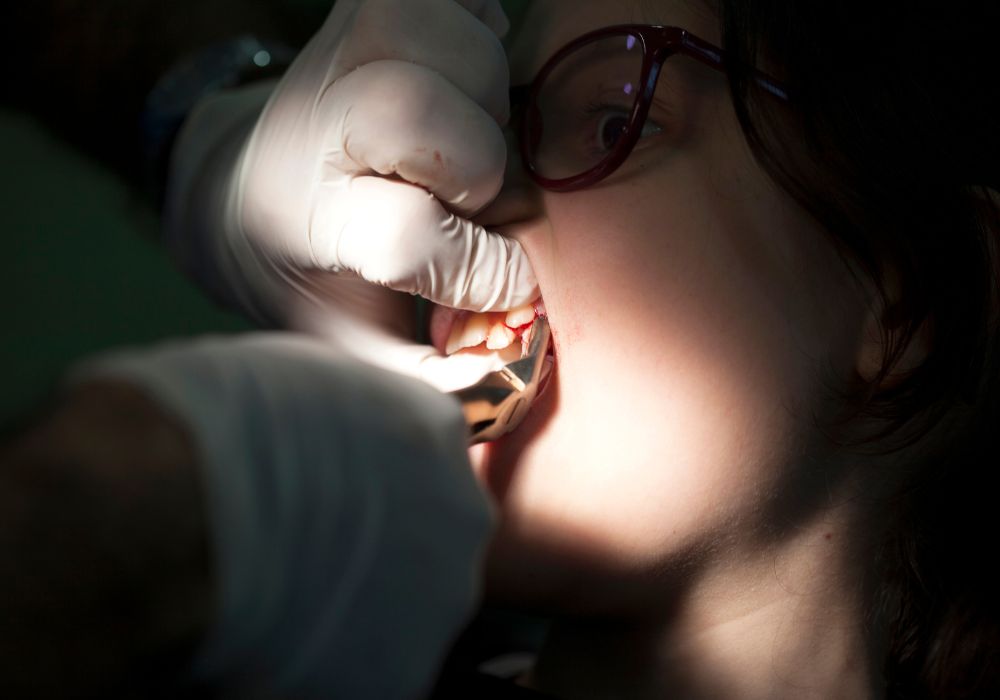
Once a tooth has been extracted, either by a dentist or by necessity at home, proper aftercare is vital for healing. Follow these practical measures after having a tooth pulled:
Rest and Recuperate
- Take it easy for 24 hours – rest, minimize talking, don’t smoke, gargle gently
- Keep head elevated with pillows to reduce bleeding
- Apply ice pack to face for 10-20 minutes each hour to prevent swelling
- Eat soft, cool foods – avoid chewing near the empty socket
Control Bleeding
- Maintain steady pressure by biting on gauze or a tea bag
- Don’t spit, rinse forcefully, drink through a straw, or smoke
- Bleeding should stop within 8 hours – call the dentist if it persists longer
Manage Pain and Discomfort
- Take over-the-counter pain relievers as recommended on the label
- Swish gently with warm salt water to keep area clean
- Numbing gels may provide temporary relief but limit use unless advised by dentist
Monitor Healing of the Extraction Site
- Some sensitivity, mild pain, and swelling is normal for a few days
- Stitches may dissolve within 1-2 weeks as gums heal
- Look out for worrisome symptoms like high fever, chills, foul odor, or uncontrolled bleeding
- Follow up with the dentist within 7 days to ensure proper healing
With proper aftercare, the socket should begin to heal within 3-4 weeks, closing completely by 12 weeks. Osseointegration of bone and soft tissue will finish by 6 months. Proper healing is vital to allow effective options like dental implants or bridgework later if desired. Be vigilant and take care when recovering from an extraction.
Frequently Asked Questions About Emergency Tooth Extractions
1. How long does the pain last after an at-home tooth extraction?
Pain and discomfort can persist in the area for up to 7 days after an extraction, especially as nerves reconnect and inflammation subsides. Manage soreness with OTC medication and ice packs on the face. Contact a dentist if severe throbbing, pain or swelling lasts more than a week.
2. What’s the best painkiller to use for tooth extraction pain?
For moderate dental pain after extractions, ibuprofen (Advil) is usually most effective since it reduces inflammation too. Otherwise, acetaminophen (Tylenol) can help relieve discomfort. Use as directed on the label. Avoid aspirin which can prolong bleeding.
3. How do you stop bleeding after pulling a tooth at home?
Biting firmly on a folded gauze pad or damp tea bag can help clot the blood after removing a tooth. Maintain this pressure for 30-60 minutes. Avoid vigorously rinsing the area – let a clot naturally form to seal the wound instead.
4. Can I stitch up the hole after taking a tooth out myself?
It’s best not to stitch the socket yourself unless you have proper training. You risk trapping bacteria inside. Place a piece of sterile gauze over the extraction site and have the dentist stitch it later if needed. Improper suturing can worsen complications.
5. How do I properly disinfect the tools I used to pull out a tooth?
Scrub all tools with hot, soapy water after use. Rinse and wipe down with rubbing alcohol. Fully submerge metal instruments in boiling water for at least 10 minutes to sterilize them. Sanitize everything before packaging away for safe storage and future dental emergencies.
6. What should I do with the tooth fragments after a traumatic extraction?
Carefully collect and rinse off all extracted tooth pieces. Place them in fresh milk or saline solution to preserve vital cells. Make every effort to see a dentist ASAP in case the tooth can possibly be replanted into the socket. Otherwise, the fragments can be safely discarded after removal.
7. How soon after an extraction can I get an implant?
It takes 3-6 months for the socket to fully heal after tooth removal before an implant can be placed. The bone must regenerate enough density through osseointegration to firmly anchor the implant. Dentists will evaluate the site via x-ray before implant installation.
8. Can I close the gap from a missing tooth myself?
No, don’t attempt orthodontic movement yourself. The gap initially allows room for swelling and facilitates healing. Once healed, discuss options with your dentist to close the space with braces, bridges or implants. Forcing teeth to move too soon risks complications like loss of anchorage.
Seeking Professional Dental Care after an Emergency Extraction
While an at-home extraction may provide relief in a difficult situation, it is not safe or ideal long-term dental care. Seeking out a licensed dentist as soon as possible after extracting a tooth yourself is extremely important for several reasons:
- The dentist will properly clean out the socket, remove any remaining debris, and stitch the wound if necessary to optimize healing.
- They can pack the socket with medicated gauze to promote clotting and prevent food impaction while swallowing.
- X-rays can check for remaining root fragments or bacterial contamination in the bone.
- They may be able to reimplant a preserved extracted tooth back into the socket after cleaning if done very soon after removal.
- Prescription


